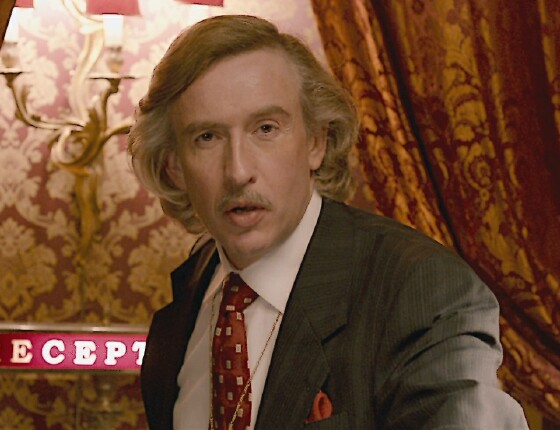Name: Paul Raymond
Lived: 15 November 1925 – 2 March 2008
Film dates: 1956 to 1992
Film made in 2013
I'm biased against Paul Raymond. When I hear his name I always think of him as
the man who ruined Mayfair. I mean the men's magazine called Mayfair, not the
area in London. Mayfair was the only men's magazine I ever bought. Let me
backtrack:
When I lived with my parents my father used to buy men's magazines: Penthouse,
Playboy, Men Only, Club, Razzle and Mayfair. He hid them in a box on top of
his wardrobe, but I soon found the hiding place and occasionally took a peek.
Maybe he didn't buy them; maybe he just borrowed them or swapped them with his
friends at work. Probably the latter, because the selection of magazines
frequently changed. The old magazines disappeared and new ones arrived in
their place. I never asked him. I was about 12 when I started looking at his
magazines, and I continued until I was 22.
I divide the magazines into three classes:
1. Playboy and Penthouse were smooth and glamorous. Too American. Not sexy
enough.
2. Men Only, Club and Razzle were overtly sexual. Too rough and pornographic.
3. Mayfair was glamorous and discreetly sexual. Perfect for my tastes.
The magazines in the second group were all published by Paul Raymond. I didn't
like his style. After I left home at the age of 22 I regularly bought Mayfair.
It was the only men's magazine I was interested in. Then, in 1990, Paul
Raymond bought Mayfair. Within two months it became a clone of his other
magazines. I stopped buying Mayfair. Since then I've never found a magazine to
replace it.
Originally, Paul Raymond was known for his musicals and plays that featured
nudity. It began very slowly in 1956, but as the laws were relaxed the nudity
became more and more explicit. He always insisted that the nudity was
tasteful. Based on the evidence of the film, I agree. The problem is that he
was ahead of his time. Prudish Britain needed to catch up with him.
The magazines, starting with Men Only in 1971, were more explicit from the
start. Paul Raymond also claimed they were tasteful, but I disagree. For me
there's nothing tasteful about a naked woman spreading her legs for the
camera. That's not what I like.
Those two businesses, the shows and the magazines, are what the public at
large knew about him, but he had a third line of business that made him rich. In
the late 1950's he began to buy houses in Soho. They were poor quality and
cheap, but he predicted their value would rise. He was right. By 1992 his
property was valued at £1.5 billion, making him the richest man in
Britain.
The film concentrates on Paul Raymond's theatre shows and his magazines. The
property business is only mentioned in passing, when he points out to his
granddaughter all the houses he owns. We see that he's an immoral man who was
unable to remain faithful to any one women. The person he loved most in the
world was his daughter Debbie. Was he a good father? In my opinion, No. When
he found out that she was taking drugs, in particular cocaine, he made no
attempt to stop her. The most disgusting scene in the film is when he gives
Debbie cocaine in hospital while she's in labour. It made the birth easier to
handle. But at what cost?
Debbie Raymond died of a drug overdose in 1992, at the age of 36, leaving two
small children behind. That's where the film ends. That's effectively where Paul
Raymond's life ended. He spent the last 16 years of his life in his penthouse suite
with the blinds drawn. He was the sad billionaire. Hardly anyone was ever
allowed in to see him.
Steve Coogan expertly plays Paul Raymond in a way to make the viewer feel
sympathetic with him. But to me he'll always be the man who ruined
Mayfair.
 |
Order from Amazon.com |
| Order from Amazon.co.uk | |
| Order from Amazon.de |





No comments:
Post a Comment
Tick the box "Notify me" to receive notification of replies.